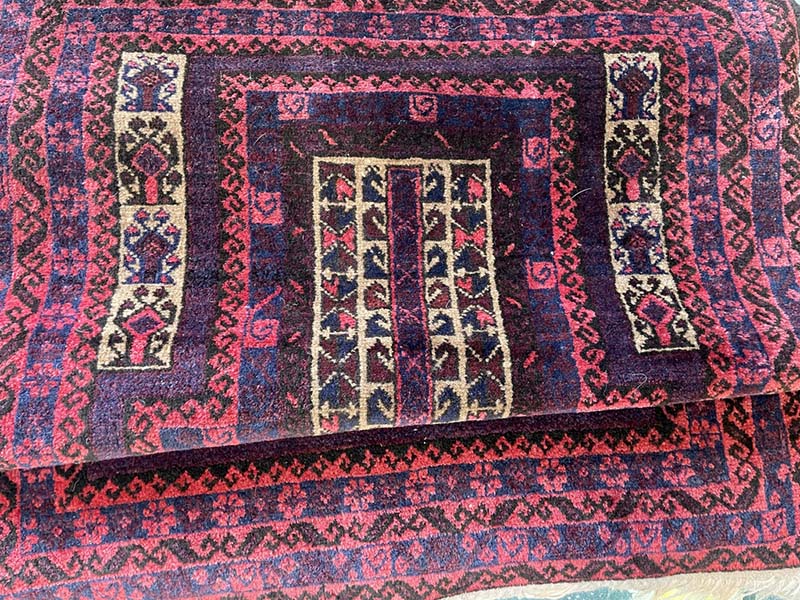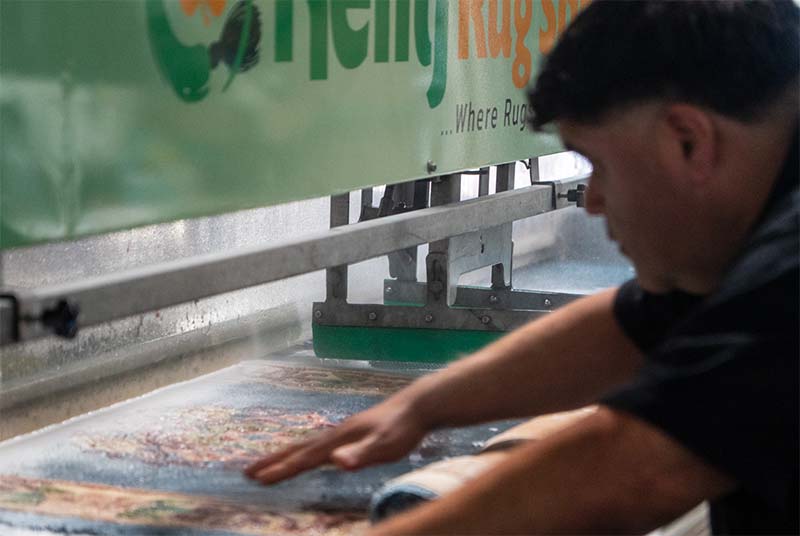Chinese Rug Cleaning: The Step-by-Step Art That Saves Heirlooms
That hand-knotted Chinese rug in your living room isn’t just a design choice – it’s a cultural artifact. And cleaning it like a factory-made floor mat? That’s the fastest way to ruin centuries of craftsmanship in a single afternoon.
At Ultimate Rug Spa, we specialize in Chinese rug cleaning with a level of care more museum than mop bucket. If you’ve been searching phrases like “oriental rug cleaning near me” or “how to clean a silk Chinese rug,” pause before you call the wrong pro – or worse, attempt a DIY. Here’s everything you need to know to protect your investment.
Oriental Rugs: What Makes Them So Delicate - And So Easy to Damage?
Every Chinese rug has a unique identity: natural dyes, hand-spun wool or silk fibers, and tightly knotted pile that holds stories, not just dirt. Unlike synthetic area rugs, these heirlooms demand a preservation mindset – not just stain removal.
What sets them apart:
- Silk weaves are prone to fiber burn from alkaline soaps or hot water.
- Wool piles contain lanolin – strip it, and the rug loses both softness and resilience.
- Cotton warps and wefts are highly sensitive to over-wetting, often causing buckling or shrinkage.
Even color alone poses a threat: traditional Chinese reds and blues often bleed if improperly tested. That’s why every rug at our facility goes through three separate dye stability tests before it sees a single drop of water. Check out our prices for cleaning Chinese Rugs

Why Steam Cleaning Will Wreck Your Oriental Rug (Yes, We Said It)
We get the question all the time from Ventura to Santa Barbara: “Can’t I just steam clean my Chinese rug like my carpet?” No – and here’s why:
- Steam pushes dirt deeper into the knotted foundation, trapping grime for good.
- Heat and moisture loosen the knots, making the rug ripple or curl.
- Alkaline detergents fade natural dyes, especially the rich red cinnabar tones used in many Chinese pieces.
At Ultimate Rug Spa, we use controlled immersion washing – not steam, not rotating brushes, and definitely no “shampoo wand.” It’s a hands-on, fiber-respecting method rooted in conservation science.
Our Chinese Rug Cleaning Process - Step by Step
We follow a 9-stage process developed for antique and heritage textiles. It’s what separates us from generic cleaners who treat every rug like it came from Home Depot.
Here’s how we do it:
- Pre-inspection and fiber ID under UV and magnification.
- Dye test to check for bleeding.
- Dusting with compressed air and cradle-suspension – never mechanical beaters.
- Full immersion hand wash in a pH-balanced bath tailored to your rug’s fiber.
- Fringe detailing by hand (no machines or bleach).
- Rinse and extraction via gentle rolling – no high-pressure vacs.
- Climate-controlled drying on raised racks to preserve shape.
- Post-cleaning grooming to lift pile and restore feel.
- Final inspection under magnification – we catch what others miss.
We also include optional mothproofing and stain resistance at no charge – especially crucial for homes in humid or coastal climates like Ventura, Montecito, or Camarillo.
Don’t Be Fooled: How to Spot a Fake Oriental Rug Expert
Here’s how you know your rug is in the wrong hands:
- They don’t ask about dye origins (vegetable vs. aniline).
- They quote a price over the phone without seeing the rug.
- They use hot water extractors or “rug shampooers” (massive red flag).
- They skip a dye test and start cleaning.
Our intake process? Surgical. Every rug gets a heritage intake report that includes:
- Age estimate
- Country of origin
- Knot count per square inch
- Fiber and dye profile
- Existing damage, fading, or moth activity
We don’t guess – we document.
When NOT to Wait: Emergency Scenarios for Chinese Rugs
Certain spills don’t just stain – they permanently alter the rug’s structure or color. If you experience any of the below, call us immediately. Time matters.
- Pet urine: Sets into wool fibers in under 48 hours and causes bacterial decay.
- Red wine or coffee: Oxidation begins within minutes, especially in vegetable dyes.
- Flooding or leaks: Creates “cellulosic browning” in cotton foundations.
- Mildew smell: Usually signals dry rot – and that’s only treatable by professionals.
Avoid the vinegar-baking soda trap. YouTube and Pinterest aren’t designed for hand-knotted Chinese textiles.
Real Expertise, Right Here in Ventura County
Ultimate Rug Spa isn’t a national franchise or a warehouse pickup service. We’re based right here in Ventura County, with service routes spanning:
- Ojai
- Santa Paula
- Thousand Oaks
- Santa Barbara
- Camarillo
We don’t subcontract. Every rug is cleaned, dried, and documented on site by technicians trained specifically in antique Chinese and oriental textiles.
What Happens When You Book? Here’s What to Expect
- Schedule your rug’s cleaning assesment
We inspect the piece in person (or via video consult) and give a price range based on age, dyes, and condition. - Pickup or drop-off at our Ventura County facility.
We offer white-glove handling with protective wrapping for transport. - Full documentation and a cleaning timeline.
Most rugs are returned within 10–14 days, depending on complexity.
Don’t Let a Mistake Be the End of Your Rug’s Story
That Chinese rug survived dynasties, trades, migrations – even wars. Don’t let an underqualified cleaner be its undoing.
If you own a hand-knotted Chinese rug – silk, wool, or a blend – give it the respect it’s earned. Ultimate Rug Spa is the only name you need to know.
Book Your Chinese Rug Assessment
Or call us at (805) 644-0846

